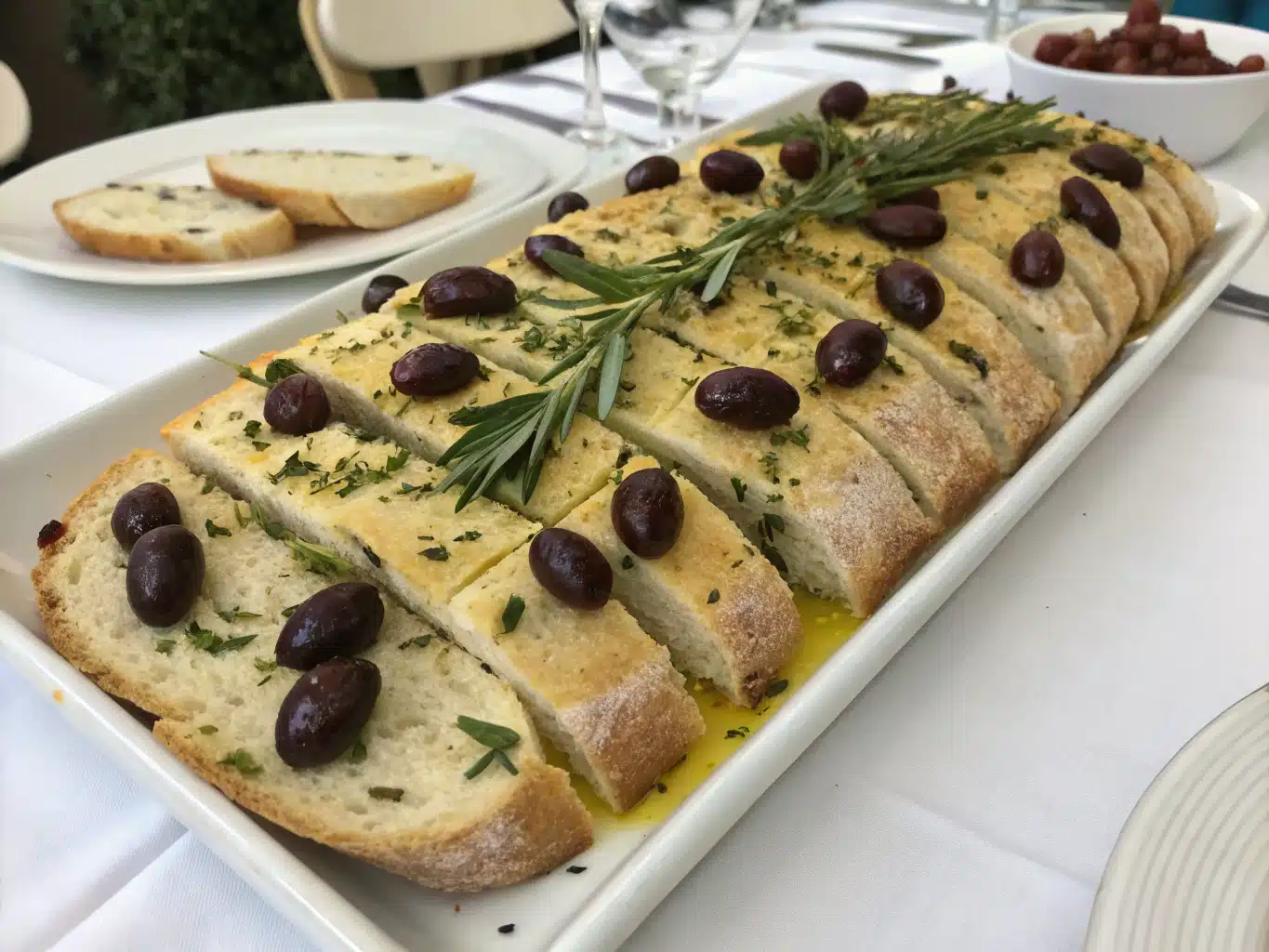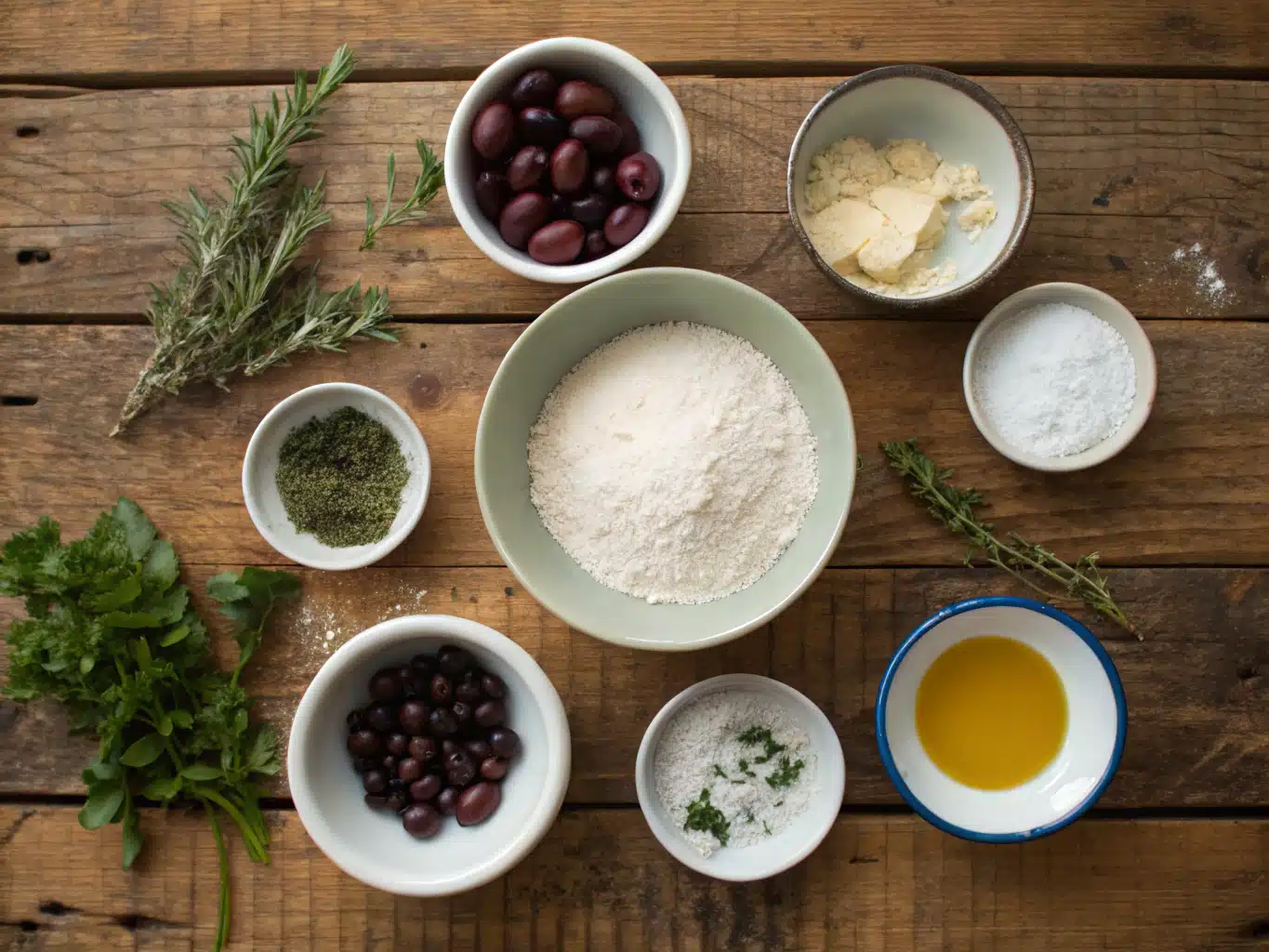
Table of Contents
Few recipes transport me quite like kalamata olive bread. It’s savory, crusty, and packed with that deep, slightly tangy flavor only kalamata olives can bring. The first time I baked it was after returning from a food trip through Santorini—my carry-on suspiciously heavier from olive jars. Back in Portland, I was craving that simple pleasure of tearing into a warm loaf, olives poking through like little edible gems.
If you’re someone who finds joy in the smell of fresh herbs and bread rising in the oven, this recipe is calling your name. In this article, we’ll dive into the flavors and origin behind kalamata olive bread, walk you through how to make it at home with easy steps, share ideas on how to serve and store it, and wrap up with clear answers to your most pressing kalamata bread questions.
Why Kalamata Olive Bread Is More Than Just a Side
A Slice of Memory and the Mediterranean
Kalamata olive bread reminds me of long, olive tree-lined trails and quiet family dinners in the backyard. The bread’s flavor is rich and umami-forward, thanks to those briny little nuggets: kalamata olives. Grown exclusively in southern Greece, these olives lend their unique taste to a variety of Mediterranean dishes—from tapenades to hummus—but they shine brilliantly in a rustic loaf.
Baking kalamata olive bread became a Sunday ritual for me. I love experimenting with textures—sometimes using whole wheat, other times with a blend of rye for a denser bite. Every version captures that homey comfort that made me fall in love with plants as food in the first place.
It doesn’t matter whether you’re an artisan baker or a casual home chef—this bread brings something inexplicably grounding to the table. The balance between chewy dough, salty olives, and hints of fresh herbs is simply unforgettable.
What Makes Kalamata Olive Bread Stand Out?
Not all olive breads are created equal. What makes kalamata olive bread so special is the olive itself. Kalamata olives have a meatier texture than ordinary black olives and a complex flavor that plays well with gluten-rich dough.
I’ve tried using green olives and even mixed Mediterranean blends, but I always come back to kalamata olives. Their natural brininess intensifies during the bake, giving little explosions of flavor in every bite.
It also pairs beautifully with kalamata olive hummus or even layered into sandwiches filled with roasted veggies. And don’t get me started on how good it is dipped into kalamata olive tapenade or olive oil infused with rosemary.
If you’re tired of bland supermarket olive breads, making kalamata olive bread at home is your new weekend project. It’s rustic, rewarding, and easier than you think.
How to Make Homemade Kalamata Olive Bread
Ingredients That Tell a Story

Homemade kalamata olive bread starts with quality ingredients. Good olives and fresh herbs are the backbone of flavor. Here’s exactly what you’ll need:
| Ingredient | Details / Substitutes |
|---|---|
| All-purpose flour | Can use half whole wheat for more density |
| Warm water | Around 100°F for proper yeast activation |
| Active dry yeast | Instant yeast works too, no need to bloom |
| Salt | Do not skip—it’s essential for flavor |
| Olive oil | Adds richness and helps crust crisp |
| Kalamata olives (pitted & chopped) | Try other kalamata olive recipes with feta if you don’t want leftover olives to go to waste |
| Fresh herbs (rosemary, thyme) | Or 1 tsp dried herbs if that’s what you have |
Time to Rise: Prep and Bake Details
Good bread doesn’t rush. This kalamata olive bread recipe takes about 90 minutes total—30 minutes of active prep and 60 minutes of rise and bake.
- 10 minutes: Mixing and kneading
- 45 minutes: First rise
- 15 minutes: Shaping and baking
That’s about 20% quicker than many traditional fermented breads, yet you’ll still get a chewy interior with that signature artisan crust.
You can also cold-proof your dough in the refrigerator overnight for extra depth in flavor. Let it come to room temperature before baking.
Bites of Briny Heaven: Step-by-Step Instructions
- In a large bowl, bloom your yeast in warm water for 5–10 minutes until foamy.
- Add flour, salt, olive oil, herbs, and stir to form a shaggy dough.
- Knead the dough on a lightly floured surface for 8–10 minutes, or until it becomes smooth and elastic.
- Fold in chopped kalamata olives gently. Don’t overmix—you want chunks!
- Cover and let rise for 45 minutes in a warm spot.
- Preheat your oven to 425°F. Form the dough into a round or oval-shaped loaf.
- Slash the top, dust lightly with flour, and bake for 25–30 minutes.
- Cool on a rack for 10–15 minutes before slicing.
Enjoy with a side of kalamata olive dip or use as a base for vegan bruschetta.
Bread as a Meal: How to Serve and Store It
Mediterranean Pairings That Sing
It’s easy to treat kalamata olive bread as just a side dish. But with the right toppings or dips, it can absolutely become the star of your meal.
Try it with roasted eggplants and sesame tahini, a dollop of chicken and kalamata olives stew, or your favorite plant-based spread. I also love using slices to make vibrant toast with marinated feta, cucumbers, and tomatoes. Feeling classic? Savor it simply with extra virgin olive oil and flaky salt—Mediterranean heaven!
Save That Loaf: Storing & Freezing Tips
Fresh bread is best the day you make it, but thankfully, kalamata olive bread stores well for a few days and freezes even better.
- At room temp: Wrap in a clean towel or beeswax paper and store in a bread box for 2–3 days.
- In the freezer: Slice before freezing. Store in an airtight freezer bag. Toast directly from frozen for best texture.
- Avoid refrigeration—it dries the loaf faster.
The National Center for Home Food Preservation confirms that properly frozen bread can last up to three months in the freezer.
To refresh, a light misting of water and 5 minutes in a hot oven brings it back to near-fresh status.
FAQs About Kalamata Olive Bread
How do you bake bread with Kalamata olives?
Chop pitted kalamata olives and fold them into your dough just before the first rise. Avoid adding them during initial mixing or kneading, as they can break down or over-salt the dough.
Do you need to pit olives first?
Yes. Always pit kalamata olives before adding them to the bread. Unpitted olives can damage either your teeth or your knife—and nobody wants that mid-loaf.
Does olive bread freeze well?
Absolutely. Slice before freezing and store in a bag with minimal air exposure. It toasts beautifully straight from the freezer and lasts up to three months.
What herbs complement olive bread?
Rosemary and thyme are perfect Mediterranean companions. You can also enjoy a sprinkle of oregano or even za’atar for a spice-forward variation. If you’re inspired, explore more ideas in this kalamata olive salad for pairing tricks.
Final Bite: Why You’ll Keep Coming Back to This Bread
Kalamata olive bread isn’t just another recipe. It’s a story, a tradition, and a reminder of the power of simple ingredients. Whether you serve it warm with herbed olive oil or use it to soak up soup on a rainy Oregon night, this loaf centers you. It asks only for your attention—and maybe a love for olives.
Experiment with kalamata olive pasta dishes if you end up hooked (trust me, you might be), and allow yourself to explore the versatility of these deeply flavorful olives.
Print
Kalamata Olive Bread: A Rustic Bite of Mediterranean Comfort
- Total Time: 90 minutes
- Yield: 1 loaf 1x
- Diet: Vegan
Description
A rustic, crusty bread with briny kalamata olives and fragrant herbs. This Mediterranean loaf is chewy, hearty, and easier than you think to make at home.
Ingredients
3 1/2 cups all-purpose flour (or half whole wheat)
1 1/2 cups warm water (~100°F)
2 tsp active dry yeast (or instant)
1 1/2 tsp salt
2 tbsp olive oil
1 cup kalamata olives, pitted and chopped
1 tbsp fresh rosemary or thyme (or 1 tsp dried)
Instructions
1. In a large bowl, bloom yeast in warm water for 5–10 minutes until foamy.
2. Add flour, salt, olive oil, herbs and stir to form shaggy dough.
3. Knead on floured surface 8–10 minutes until smooth and elastic.
4. Fold in chopped kalamata olives gently—do not overmix.
5. Cover and let rise for 45 minutes in a warm spot.
6. Preheat oven to 425°F. Shape dough into round or oblong loaf.
7. Slash top, dust lightly with flour, bake 25–30 minutes.
8. Cool 10–15 minutes on rack before slicing.
9. Serve with dips or as base for sandwiches.
Notes
You can cold-proof dough overnight in fridge for deeper flavor.
Best served the day it’s baked, but slices freeze well and toast beautifully.
Avoid refrigerating; it dries the loaf faster.
Try it with olive tapenade, herbed feta, or roasted veggie spreads.
- Prep Time: 10 minutes
- Cook Time: 30 minutes
- Category: Bread
- Method: Baking
- Cuisine: Mediterranean
Nutrition
- Serving Size: 1 slice
- Calories: 180
- Sugar: 0g
- Sodium: 310mg
- Fat: 5g
- Saturated Fat: 0.5g
- Unsaturated Fat: 4g
- Trans Fat: 0g
- Carbohydrates: 28g
- Fiber: 2g
- Protein: 4g
- Cholesterol: 0mg
Keywords: kalamata olive bread, Mediterranean bread, rustic loaf, vegan bread
